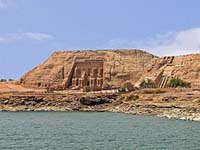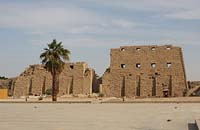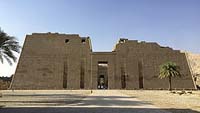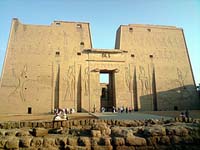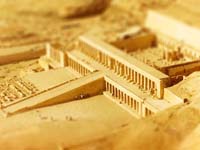Ancient Egyptian Temples - For Kids
Ancient Egypt left behind an untold number of temples that are impressive even by today's standards. They have withstood thousands of years in the unforgiving desert. Sand or the ever-changing Nile River has consumed some. Those that remain and have been uncovered by archaeologists are some of the greatest treasures of the world.
Construction of Ancient Egypt's Temples
The Ancient Egyptians put a lot of effort into constructing their temples. These large and intricate structures were carefully planned and built over many years. Planning would start with the selection of a location. Location was important. Alignment with the sun, moon or stars was sometimes a factor. Closeness to other temples or religious significance was another way of choosing a location.
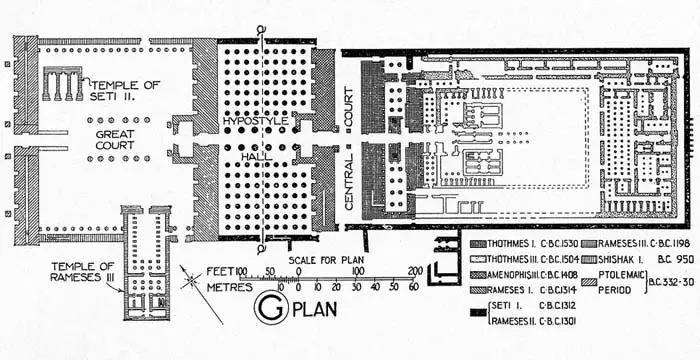
© psulibscollections - Temple of Amon -- Plan
Before they could begin work, they performed religious rituals to prepare the site. After that, hundreds of workers set to laying out the foundation and building the walls of the temple. Stone was the most common material because of its strength. Craftsmen cut the stones so perfectly that mortar, the material that holds most brick or stone structures together, was not usually needed. Workers used ramps to access the higher areas.

© isawnyu - Stone blocks from the mortuary temple of Sahure
When the walls were finished, workers would carve art into the walls, decorating the pieces with paint or gold leaf. Shrines, religious statues, ornate columns and other decorations would finish off the decor of Ancient Egyptian temples.
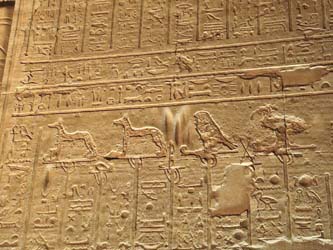
© isawnyu - Wall reliefs at Kom Ombo temple
Use of Ancient Egyptian Temples
Egyptian temples were built to honor the gods and Egyptian pharaohs, and to act as homes for these honored beings.
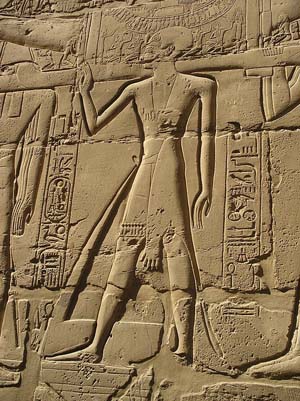
© Kenzyb - Karnak temple, priest relief
The temples of Ancient Egypt were more than places of worship. Priests carried out rituals in them every day, sometimes with the help of musicians and performers. When there was a holy day, the priests would have a festival. Unlike festivals now, they were mostly attended by priests, but large festivals would draw a crowd of onlookers.
Everyday people could come to temples to give their prayers to priests. They could also pray in certain areas of the temple that were public. Some people were able to stay at temples after deciding to devote their lives to it, even if they were not priests. Workers needed to keep the temples running were also in and around temples providing food, cleaning, cooking, etc.
Famous Temples of Ancient Egypt
- Abu Simbel - Abu Simbel is a temple complex with large rock temples to Ramses II and Nefertari.
- Karnak Temples - Karnak is home to the largest ancient religious site in Egypt.
- Medinet Habu - Medinet Habu is the mortuary temple of Ramses III.
- Temple of Edfu - The Temple of Edfu is a large structure dedicated to the god Horus.
- Temple of Hatshepsut - The Temple of Hatshepsut is the mortuary temple of Queen Hatshepsut and is dedicated to the god Amon-Ra.
- Luxor Temple - The Luxor Temple is one of the major temples in modern-day Luxor and a popular tourist destination.
